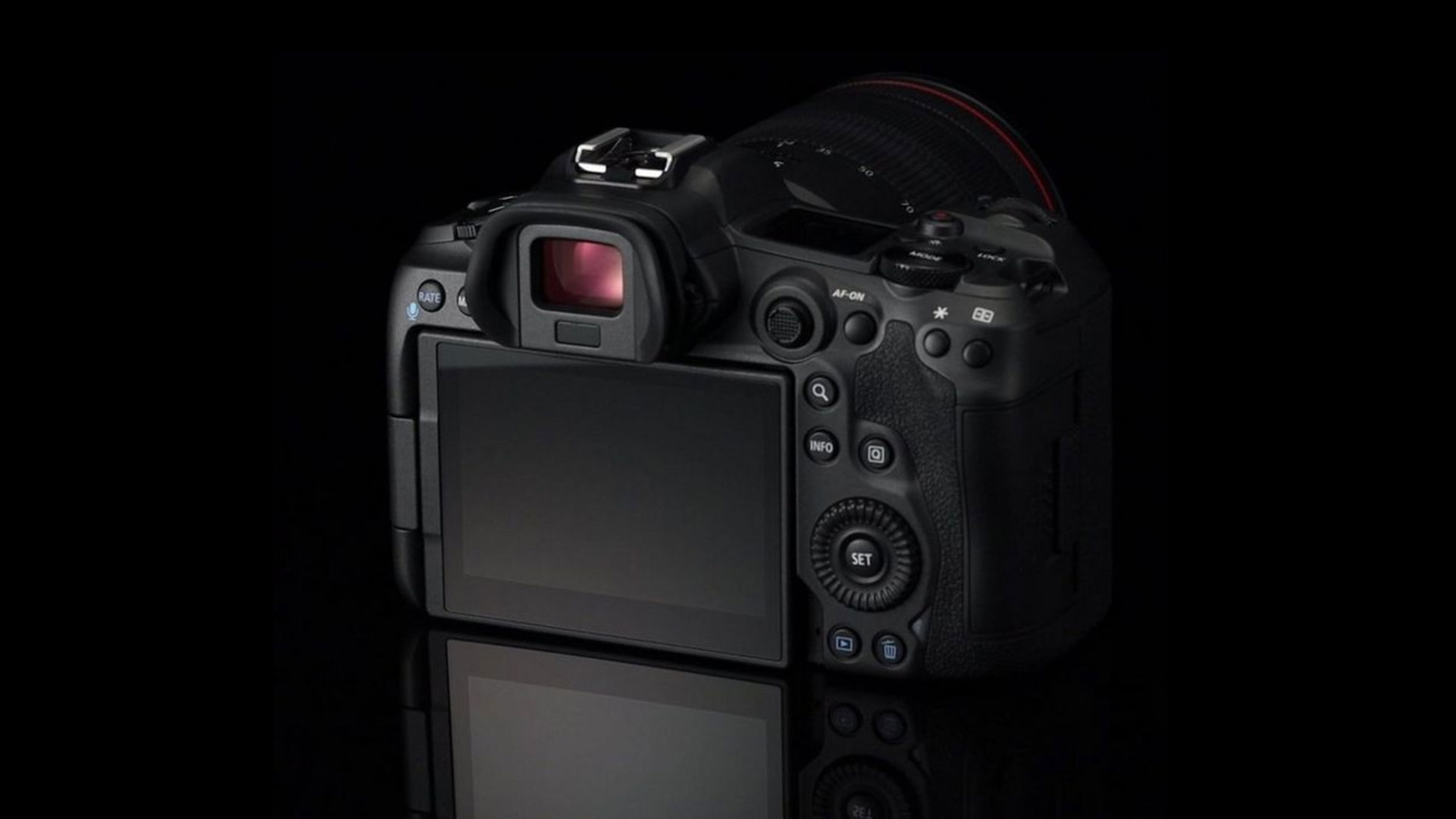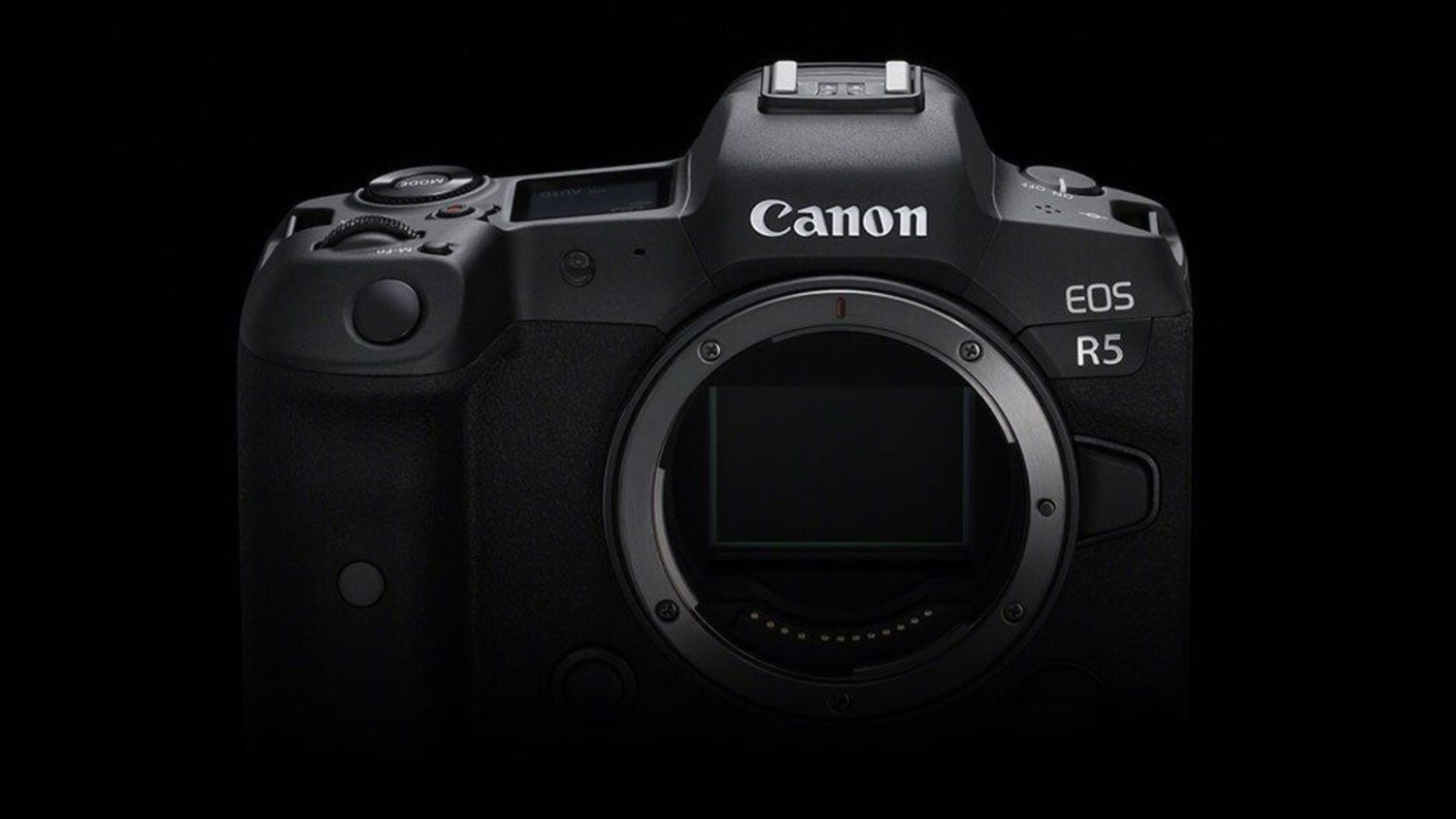Canon has just announced their brand new mirrorless cameras, the EOS R5 and EOS R6 (Thursday, July 9th, 2020), and the R5 especially seems to blur the lines between mirrorless and cinema quality thanks to its huge specs.
Set at two different price points. these two cameras are clearly aimed at different markets: those who can afford the EOS R5 and those who can't. All joking aside, they both pack some serious kit and share quite a few pieces of tech, so let's take a look at how they stack up against each other.
The Price Difference is Notable
The Canon EOS R5 is announced at $3,899 (£4,199 and around $7,585 Australian Dollars) and is set to ship on July 30th, 2020. Whereas the EOS R6 is around $1,400 cheaper priced at $2,499 (£2,499 or around $4,500 Australian Dollars).
Stills Image Resolution

The Canon EOS R5 packs a 45MP image sensor for huge stills capture
The EOS R6 shoots stills at 20 MP, whereas the EOS R5 captures 45 MP images. They both feature the same Dual Pixel CMOS AF sensor, so that means the EOS R6 has the upper hand when it comes to lower noise due to the comparatively lower photo sites. However, the new DIGIC X processor is set to quell any issues with noise anyway, as it's reported to handle this well.
Incredible Image Stabilization
The EOS R6 and EOS R5 see in-body image stabilization for the first time in a Canon mirrorless camera, which offers up to 5 stops of stabilization. When combined with a compatible RF lens this can go up to an incredible 8 stops of IS, meaning handheld shooting, even in low light, is possible more so now than it ever was.
Similar ISO Range

Both cameras feature similar ISO ranges but the EOS R6 can reach just that little higher
Video Resolution
If you're keen to get the best video resolution, the EOS R5 is for you. It's capable of shooting up to 8K 12 bit DCI raw video footage at 30 fps. Because of its uncropped movie recording, it can also capture 4K oversampled, meaning even better definition than the EOS R6's 4K cropped UHD video capture. The EOS R5 also has many more recording options, including 4K at 120 fps and drops all the way down to 1080p with a vast array of different frame rates. Both cameras shoot C-Log, HLG, and PQ HDR as well.
Fantastic EVF and Touchscreens

The EOS R5 has slightly better specs when it comes to the EVF and vari-angle touchscreen both in terms of size and resolution
The EOS R6 has a pretty decent viewfinder at 0.5" with 3.69 million dots OLED running at a reported 60 fps, but the EOS R5 again improves on that by using an identically sized 0.5" EVF but at 5.76 million dots OLED running at 120 fps. That means the EOS R5 has the most advanced EVF of any Canon, closer to an optical viewfinder than any other Canon EVF.
The vari-angle touchscreens are similarly different, with the EOS R6 packing a 3.0" 1.6 million dot screen, and the EOS R5 going sightly bigger with a 3.2" 2.1 million dot screen instead, making things that little bit better to see on the rear screen.
Top Status LCD

The EOS R6 lacks a top status LCD, with a mode dial in place instead
Wireless Connectivity
Both cameras connect via Wi-Fi and Bluetooth, but the EOS R5 has a slight upgrade in that it can connect via 2.4GHz and 5GHz Wi-Fi for better connections when interference is an issue. Another big announcement by Canon is their new automatic connectivity to Google Photos and the Adobe Creative Cloud.

Great wireless connectivity for both cameras including Wi-Fi and Bluetooth LE, and can even transfer files automatically to Google Photos and Adobe Creative Cloud
Canon has realized that workflow is as important as the shooting itself. That’s why they've unveiled the new Auto Transfer Function. Canon has teamed up with two of the biggest cloud markets, Adobe and Google, to work on this cloud platform system. Now Canon EOS R5 and R6 users can automatically transfer the images from the camera and up to the cloud and share with one of these two platforms.
Card Slots
The two cameras have two card slots each. The EOS R6 has two fast SD UHS-II slots, whereas the EOS R5 features one SD UHS-II slot, and a CFexpress card slot. The CFexpress cards can write at speeds up to 1400 MB/s compared with the 300 MB/s top speeds of the SD UHS-II, and the reason for Canon's inclusion of this slot in the EOS R5 is obvious: something is needed to capture 45 MP stills at 20 fps and 8K 12 bit DCI raw video footage without failing spectacularly.

The EOS R5 has one SD UHS-II slot and a faster CFexpress slot to capture the 45MP stills and 8K raw video footage
Some big numbers being thrown around by Canon at the moment with their announcement of the brand new EOS R5 and EOS R6 camera bodies. It'll be interesting to get a hands-on look at these two cameras to see how well they compare to the other bodies in Canon's mirrorless group. Set for a suggested release date of July 30th, 2020, we should start to see samples soon. The EOS R5 and EOS R6 are available for preorder now.







I'm interested to see how the R6 performs in low light. It will have a huge pixel pitch of 6.5 microns and could be really promising for nightscapes, milky ways and astro.
Same sensor as the 1dx3. So, should be amazing!
No GPS?
From the docs, seems like it can geotagged over Bluetooth connection to phone like with Sony cameras...
I have yet to meet a single photographer who uses GPS in my circle of buddies.
My thoughts exactly - no GPS... :(
So, can you get clean 8K out of any of the ports? The USB Type C Gen2 is capable but how about the HDMI Type D?
4K RAW video would have been really good.
Would have to be 4K cropped for that.
Wouldn't really mind the crop....just don't wanna go from Raw to H.264 if i need slow mo
Still a good camera though.
Still would go for the Blackmagic 6k over this R5 for videos though
I use the pocket 4K blackmagic, and not having the autofocus feature canon has+ having no viewfinder makes that the camera is a challenge, close to impossible, to use when you are filming in direct sunlight. However blackmagic color science and user friendly compressed BRAW is amazing image quality, for OK data storage and write speeds. Angelbird v60 SD card can capture BRAW 3:1 at 24p in DCI 4K and I am afraid this canon and 8K RAW requires something exotic and expensive + data storage costs.
Auto focus on the Blackmagic 4k/6k would have been really really good, as for the viewfinder, even if the BM has a swivel lcd, i'll still by an external monitor because of the type of stuff i shoot.
Not only does the R5 do 8k and 4k video, it does 4k wallet. I'll buy one in ten years when they're on the used market and I'm old.
https://www.youtube.com/watch?v=_byYwav5ccM
I'll just swap my old and dying 6D for the R5...DITTO!!
I vote we put an end to EVF measurement via dots. Nobody measures resolution by total dots.
Screen resolution is a useful measure of an EVF. I agree that it's certainly not the only useful measure, and it may not be the most important measure, if something else is really wrong with the EVF. Refresh rate and colour accuracy are two other measures that spring to mind. Still, generally speaking, I'd rather look at a higher resolution EVF than a low resolution one.
I think perhaps the better way to say all this is, 5 reasons to wait until the camera is sold for a reduced price.
If you already own Canon lenses, it's not likely you're going to unload the inventory and switch brands. Unless of course you're nervous about Olympus.
As one pro always reminds me, don't waste so much time on all the technicals...focus on the images.
Rest assured, there are going to be tons of innovations as the product life cycle reduces to less than a year. Don't chase the technology...let it chase you. Or you'll go broke.
Unless, of course, you can afford to chase the technology. ;-) If I had the bank account, I would be on the R5 preorder list.
Huge announcements? I'm a bird photographer using Canon DSLRs.
In case I decide to switch to mirrorless, kindly help me decide with logical arguments which combo should I choose:
Canon: APS-C Body + Canon RF 100-500mm f/4.5-7.1L IS USM (lens price $ 2,700/-)
OR
Sony: APS-C Body + Sony FE 200-600mm f/5.6-6.3 G OSS (lens price $ 2,000/-)
My importance is on the glass mainly, the aperture at long end and the price considering IQ will be almost the same.
Sony beats the canon except for ergonomics, which does matter with longer lenses
i still want to see a test with EF lenses to know how they are with that adaptator